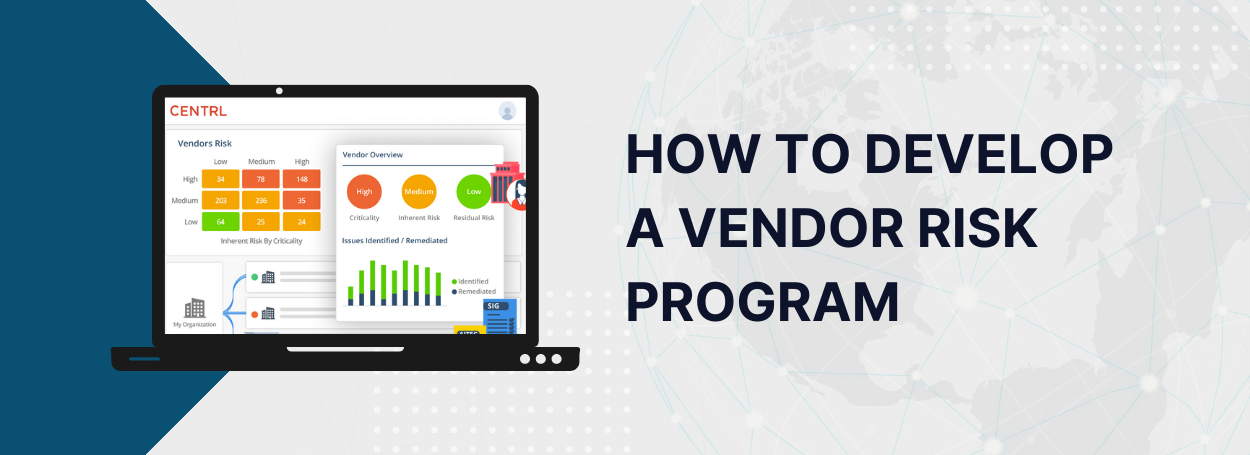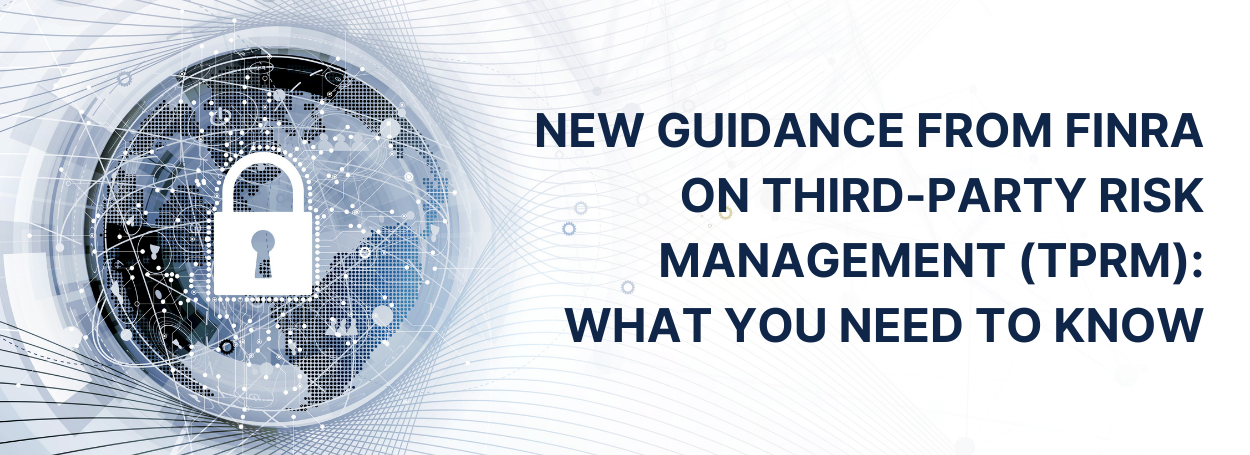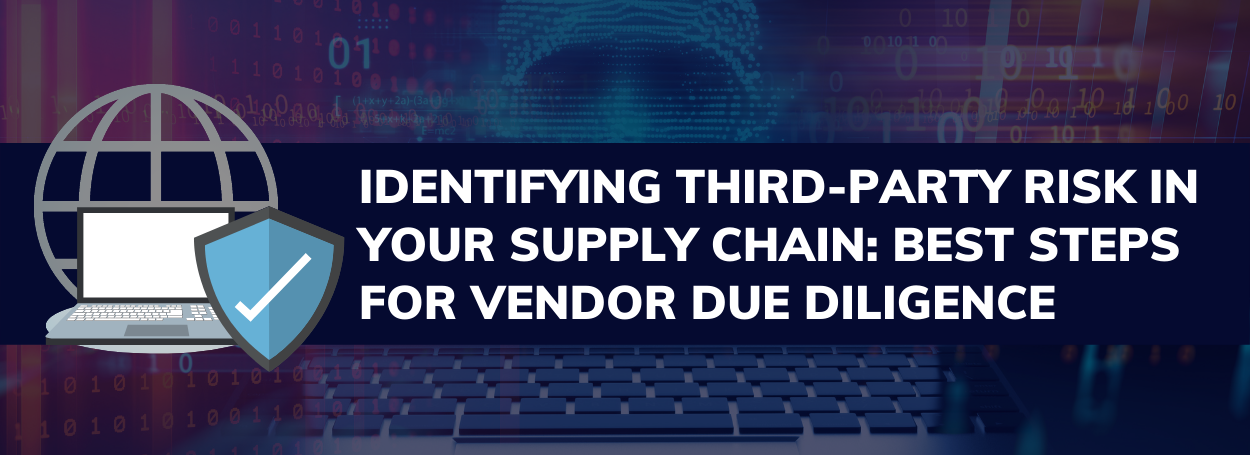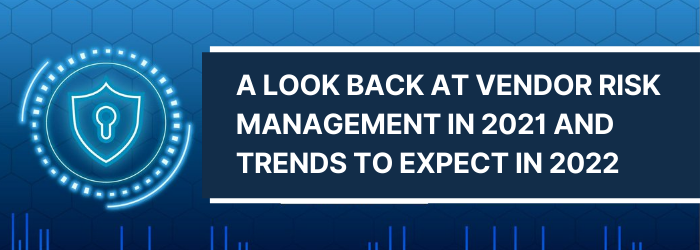How to Develop a Vendor Risk Program

Risk management is an essential part of running a successful business. As businesses become increasingly interconnected by technology and supply chains stretch across territories or globally, effective Vendor Risk Management (VRM) is important.
VRM is a vital part of your company’s information risk management strategy. This process ensures that third-party products, IT vendors, and service providers do not cause business disruption or negatively affect performance.
Developing a risk management process to identify and minimize risks involves addressing areas as varied as cybersecurity and is intended to help organizations manage and monitor risk exposure resulting from third-party product vendors.
With the help of the right tools and good planning to address general vendor risk management challenges and process improvements specific to your company, you can create a successful VRM program.
What is Vendor Risk Management (VRM)?
Vendor Risk Management (VRM) identifies, analyses, monitors, and mitigates risks arising from service providers and external suppliers. These risks could affect your company’s cybersecurity, organizational reputation, legal compliance, and even financial consequences.
VRM is a comprehensive plan to identify and mitigate potential business uncertainties and legal liabilities concerning contracting with third-party vendors for information technology (IT) products and services.
Third-party risk management begins with due diligence before signing a contract, as with any risk management program. It also involves a risk assessment for every contractor, vendor, supplier, and service provider your company works with.
When a company outsources business processes to an outside vendor, sensitive data may be transmitted, stored, and processed on both company and vendor networks. In addition, regulations such as the Health Information Portability and Accountability Act (HIPAA), the Payment Card Industry Data Security Standard (PCI DSS), and the Sarbanes-Oxley Act (SOX) require that risk management policies extend to outside vendors, subcontractors, contractors, and consultants.
What Is A Vendor Risk Management Program?
VRM programs are concerned with ensuring that third-party products, IT vendors, and service providers do not cause business disruption or financial and reputational damage. These programs are formalized processes and procedures that enable organizations to implement effective third-party risk management and mitigation policies.
An effective VRM program should cover all stages of the vendor lifecycle, including vendor risk assessments, vendor onboarding and offboarding, and outline an incident response plan. It should also include frameworks to ensure that suppliers meet internal and regulatory compliance requirements.
One of the goals of a successful VRM program is to prevent cyber-attacks through third-party relationships through due diligence and lifecycle management. For example, a VRM program can work with an information security program to examine the third-party risk to protect corporate assets.
Why is a Vendor Risk Management Program Important?
Companies must also address strategic, legal, privacy, operational, reputational concerns, and cybersecurity. You can safeguard your organization and maintain a healthy connection with your suppliers by including VRM in your risk management program.
A well-designed VRM program can mitigate the effects of disruptive events while also lowering a company’s overall risk exposure. VRM, on the other hand, has many more advantages than only risk reduction.
For example, companies implementing a VRM program can evaluate and onboard new suppliers more effectively by putting the right tools in the hands of the right people more quickly. A VRM program can also help companies track supplier relationships over time, detect new risks, and assess supplier performance.
Trust is the most significant benefit of a VRM program. You can focus on operating your business rather than worrying about your contractors if you know you’ve done your homework. In addition, this freedom will allow you to expand your organization and take advantage of new opportunities as they arise.
Improving your communications with suppliers will also translate into increased quality and performance. In addition, you will be able to optimize your workflow and improve the services you deliver to consumers if all parties move in lockstep.
Finally, a VRM program will safeguard you against future intrusions and incidents. Today’s investment of time and money will save you money tomorrow.
How to Create a Vendor Risk Management Program
While organizations leveraging a vendor risk management program, need to assess reputational, legal, and privacy risks, many organizations start with cybersecurity risks. These issues help identify the other risk areas.
A successful vendor risk management program should follow these steps:
- Develop Governance Documents Appropriate to your Organization.
The documents you need for your program will vary depending on the complexity of your situation. However, you should start with a well-documented policy that sets the high-level direction for what you will need to do.
A schedule and procedures are two other documents that can be very helpful as you work out the details of the process. The plan is a comprehensive set of steps for senior management and business lines. The procedures will outline the day-to-day responsibilities of supplier risk management in great detail.
- Defined vendor selection process.
Creating a defined supplier selection process is critical to the success of your organization’s supplier relationships. Therefore, your organization should execute the strategy as a starting point for selecting any supplier that can provide a product or service.
- Refresh your due diligence process and ongoing monitoring
Due diligence is simplified through the use of automation and AI-driven analytics. You can evaluate other data that contains critical information about the health and risk profile of your suppliers and service providers, in addition to tracking and measuring supplier performance in real-time against your set KPIs, including:
- Financial statements can reveal underlying issues that may contribute to a provider’s business’s economic decline or even collapse.
- Service organization control (SOC) reports contain critical information about a supplier’s compliance with industry and legal requirements and regulations and its internal controls to achieve compliance.
- Additional assessments your company conducts to determine specific levels of compliance, such as general risk assessments, public perception audits, and information security assessments.
- Develop a robust internal audit process.
Implement an internal audit in your supplier risk management program. This will serve to catch everything before an examiner arrives on site. It is preferable to detect and resolve an error or program deficiency long before the examiner does. In addition, an internal audit will help verify your organization’s controls in place to mitigate the risks.
In addition to tracking your suppliers’ performance and compliance, focusing on your controls helps you identify areas that need improvement and provides clean, precise data that streamlines external audits and minimizes the risk of adverse consequences from non-compliance.
Internal audits are considerably aided by complete data openness and real-time access to information offered by a comprehensive cloud-based provisioning solution that includes deep data analytics, just as they are with due diligence.
In addition, measuring your own IT security or Health Insurance Portability and Accountability Act (HIPPA) compliance also provides a helpful framework for measuring the same for your providers.
- Establish a comprehensive reporting process.
The board of directors, senior management, and stakeholders will benefit significantly from consistent reporting to make informed decisions and be aware of the supplier risk environment.
These reports should include specific elements, such as a high-level summary of your supplier portfolio, risk assessments, and any new regulations and ongoing due diligence. It is also worth noting that reporting to your organization’s leadership is a regulatory requirement.
Protect yourself from Risk with Vendor360
Vendor360 is a third-party ecosystem management solution that includes establishing risk assessments for each vendor and monitoring the whole vendor lifecycle.
Our platform helps our customers realize overwhelming supplier management for workflow automation, questionnaire templates, recurring assessment scheduling, auto-assignment to business users, alerts, and notifications.
In addition, our customers can take their third-party risk management program to the next level with enhanced third-party risk assessment information, actionable intelligence, and analytics that empower business decisions for stakeholders and senior management.
Ready to learn more? Book a free Vendor360 demo today.


